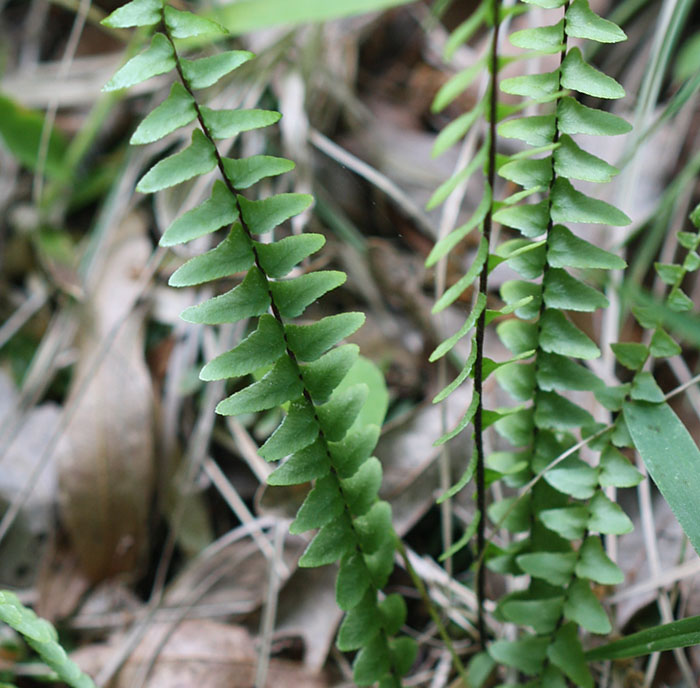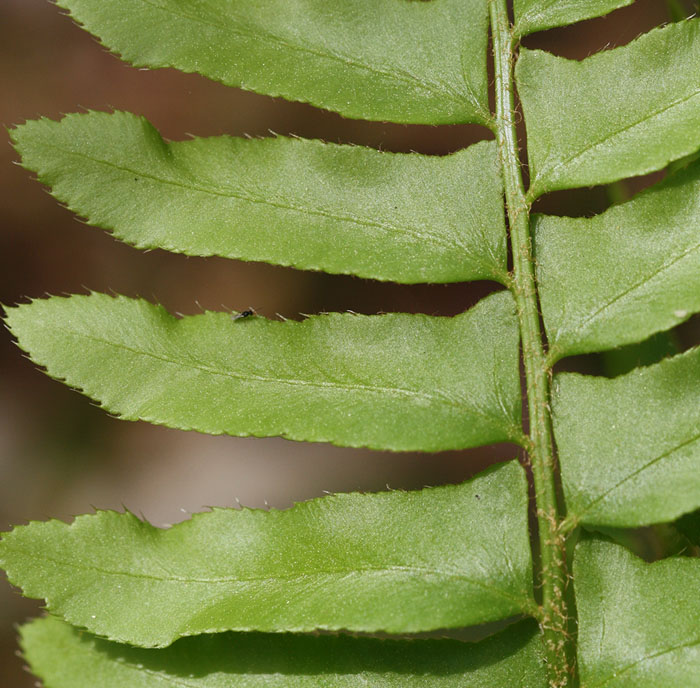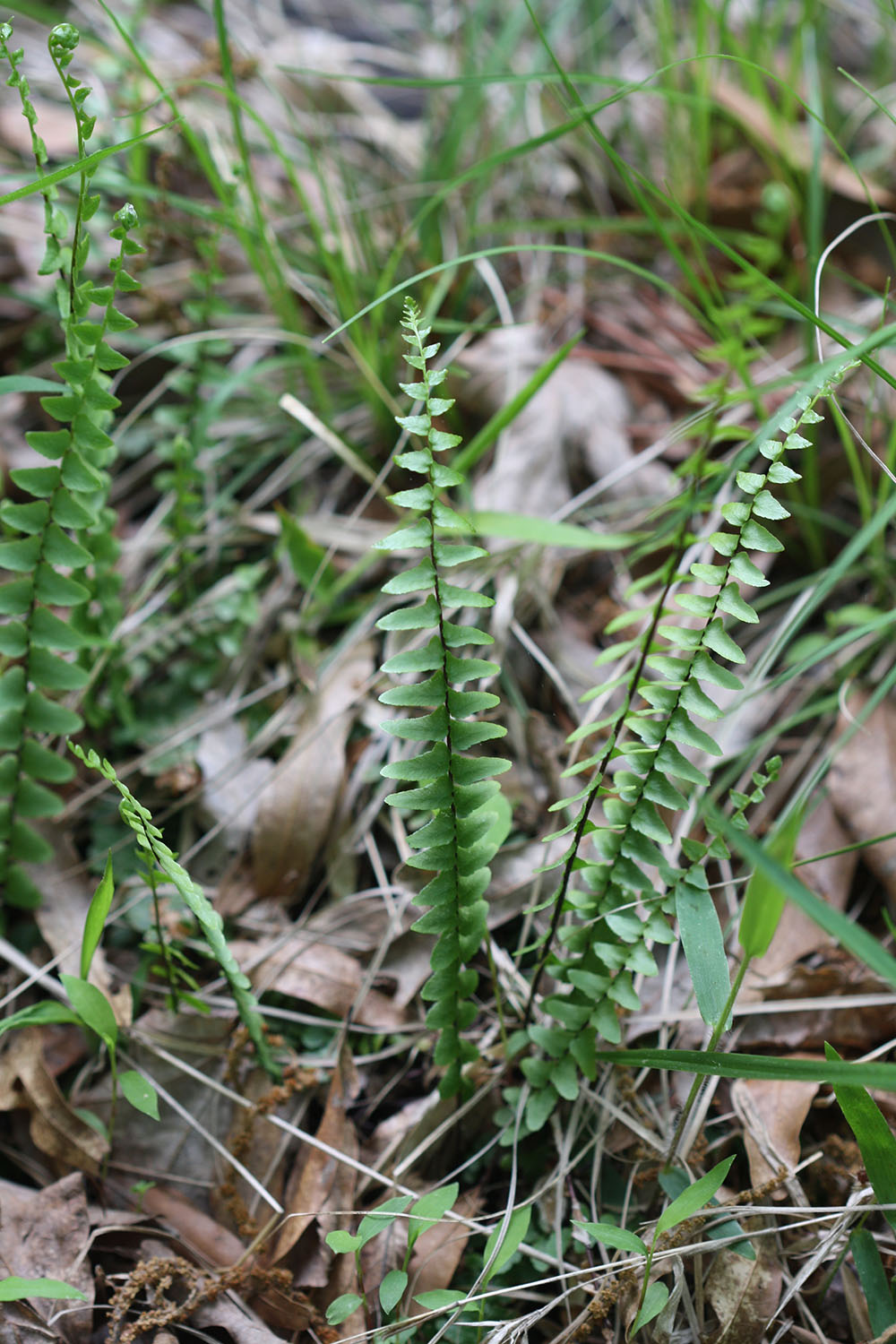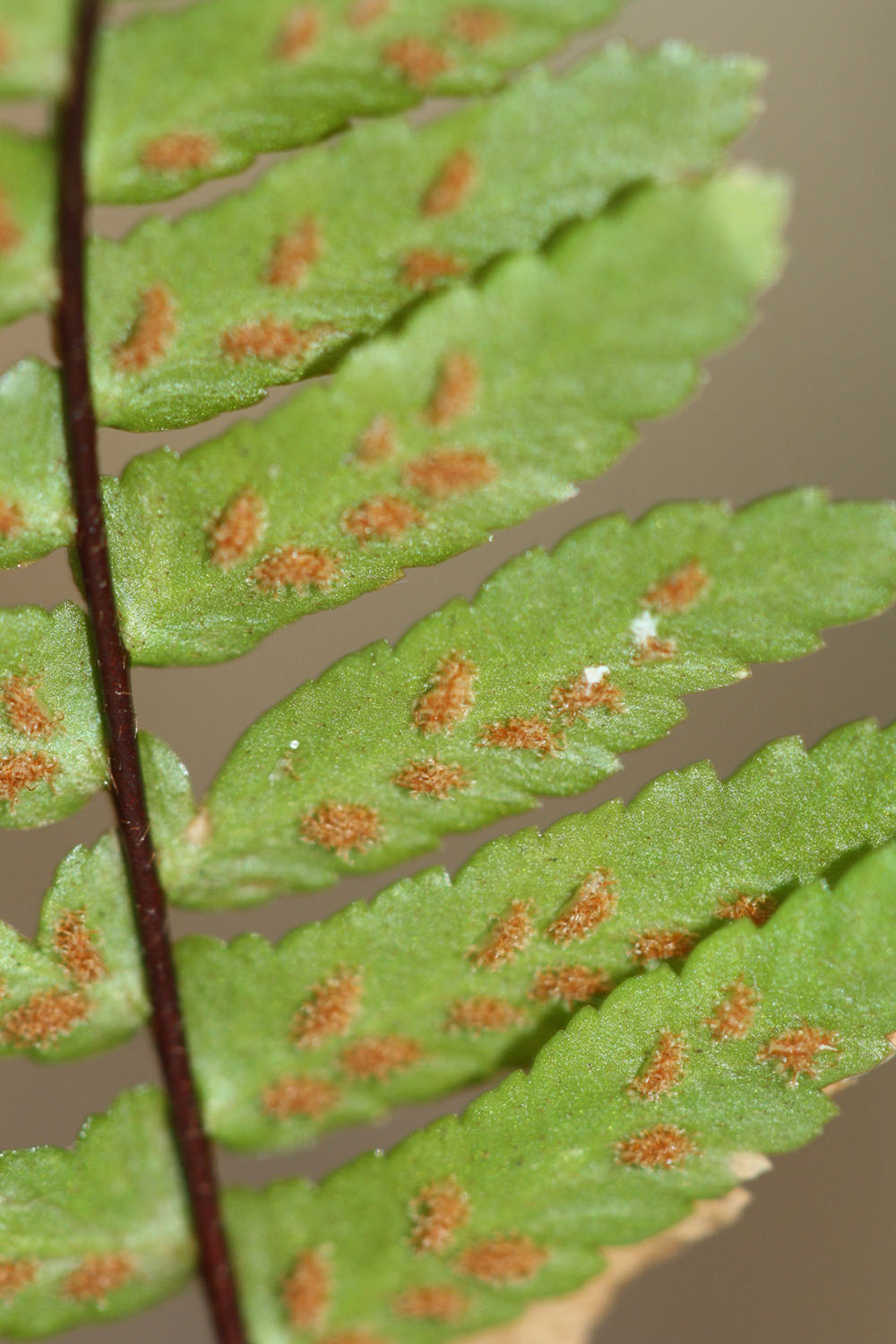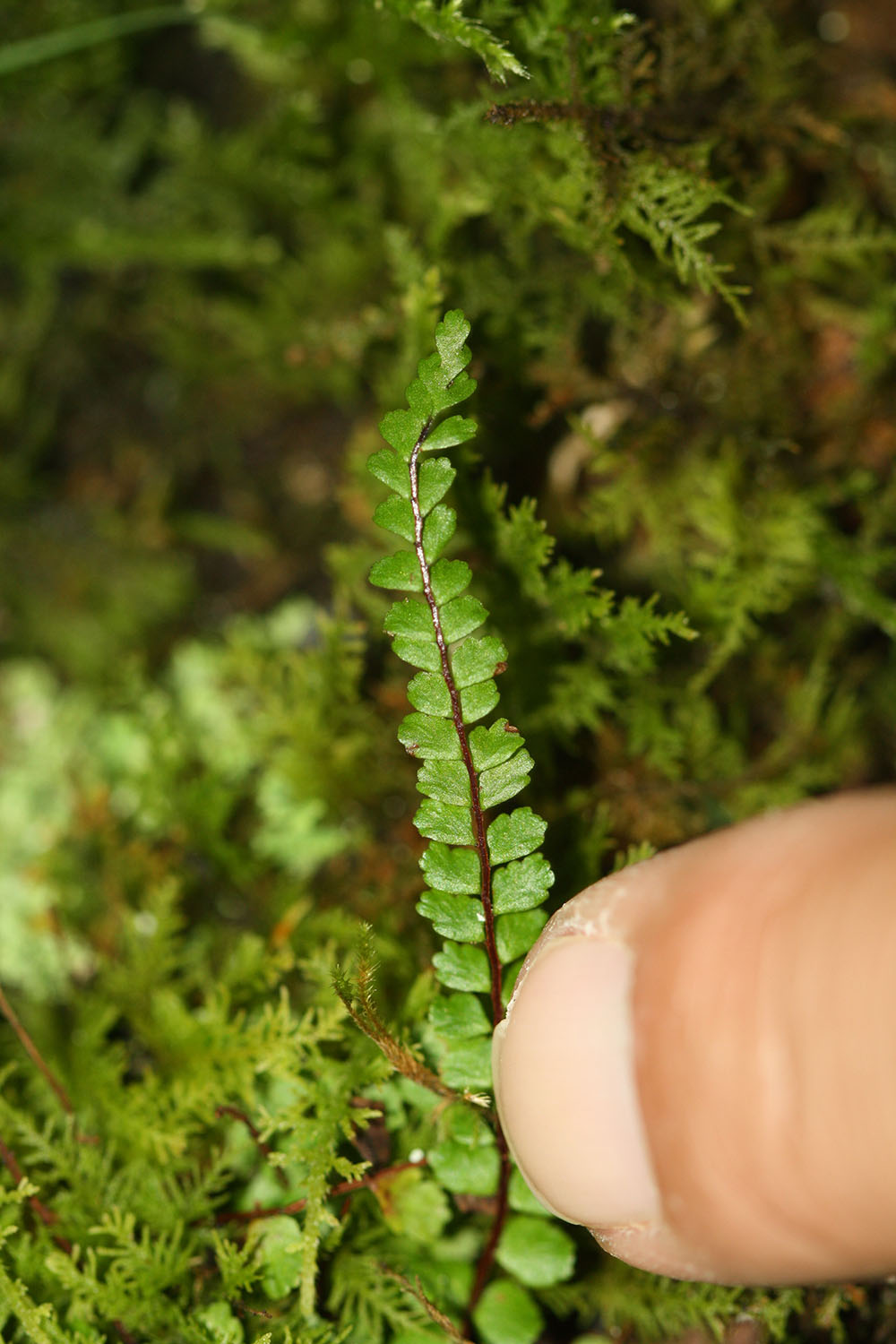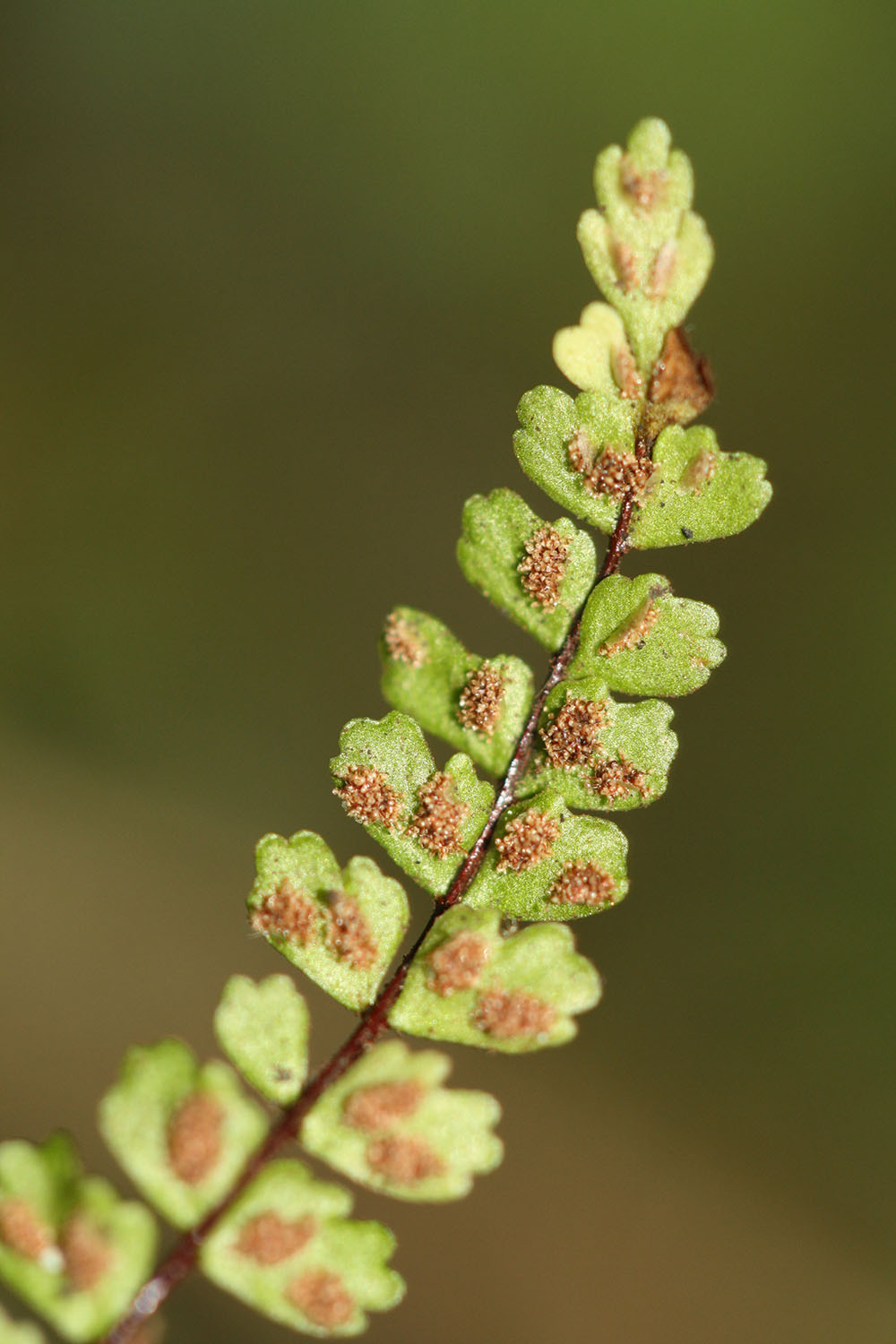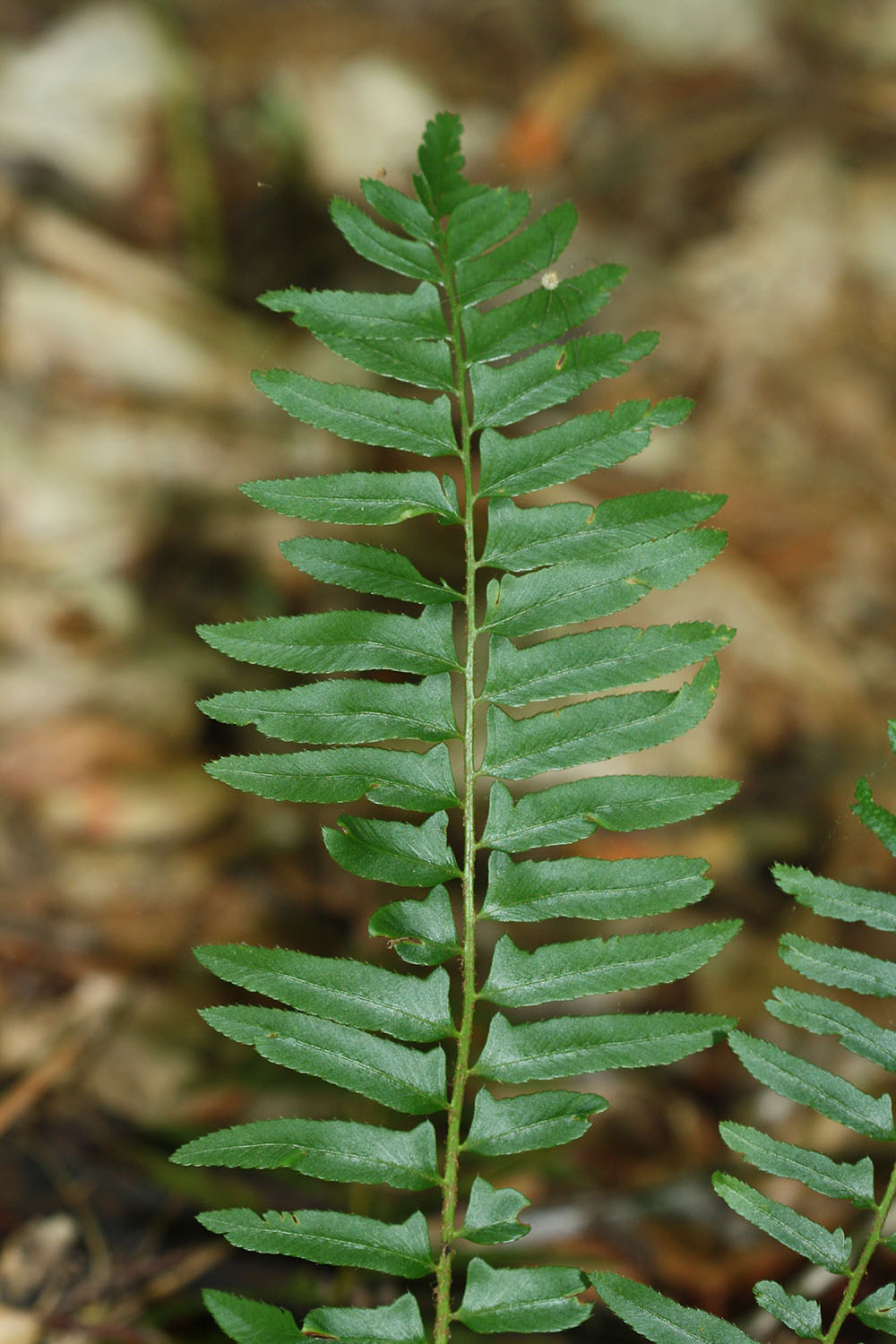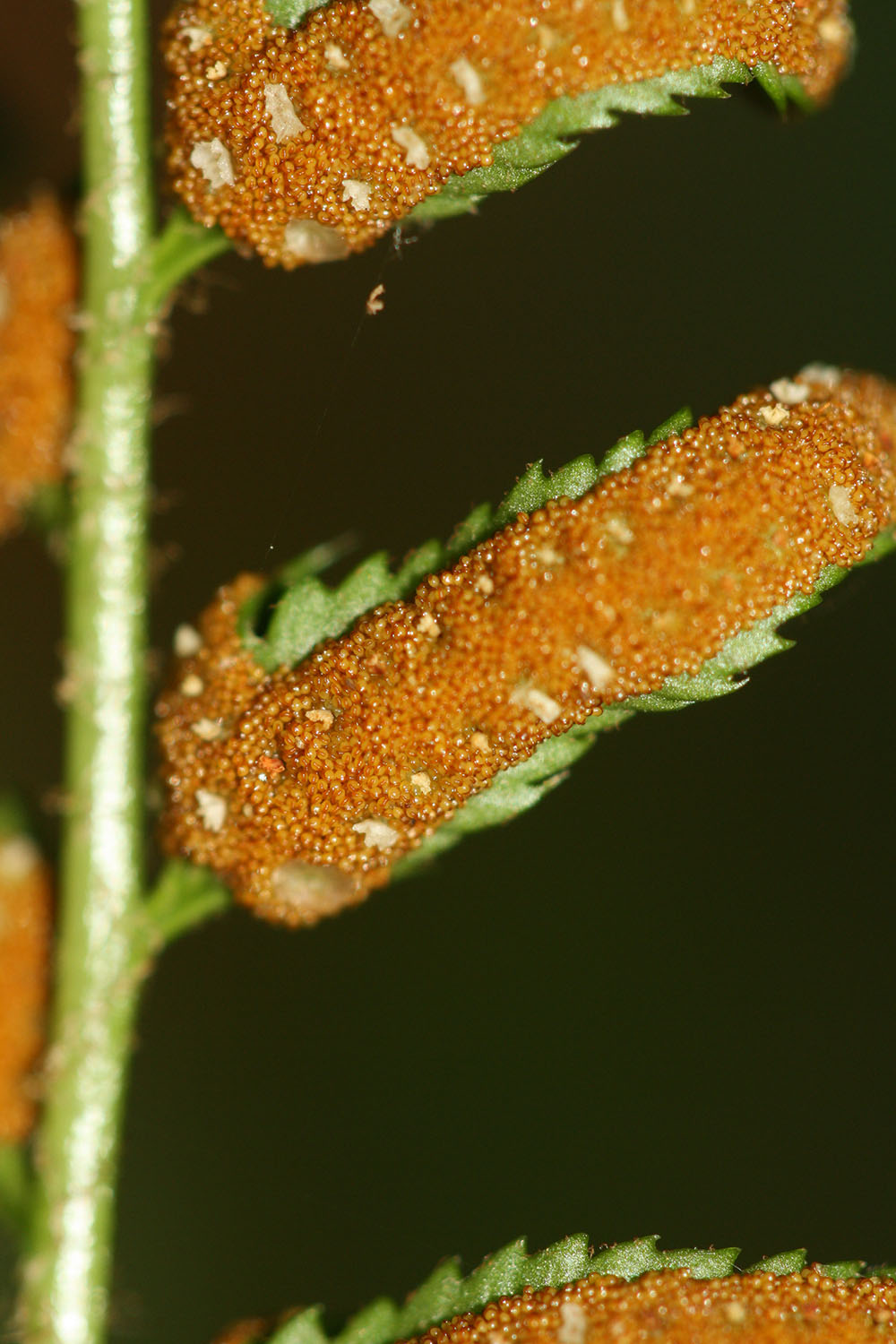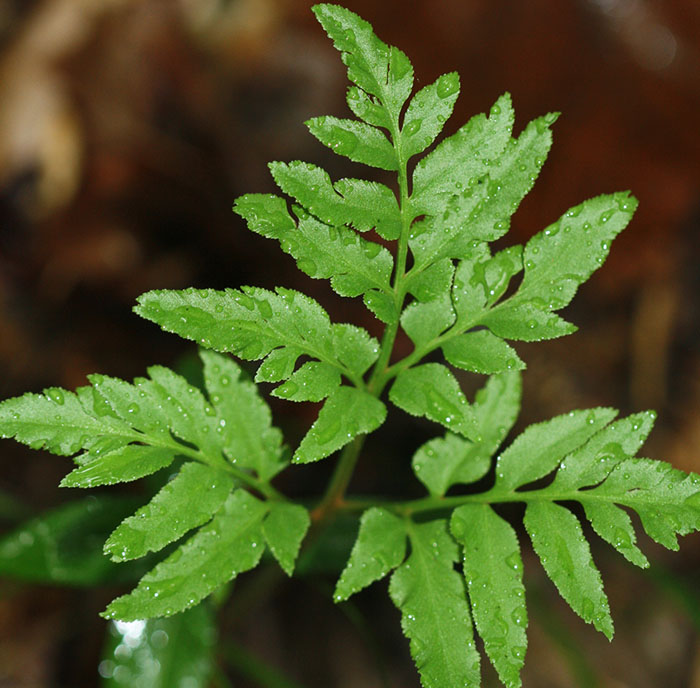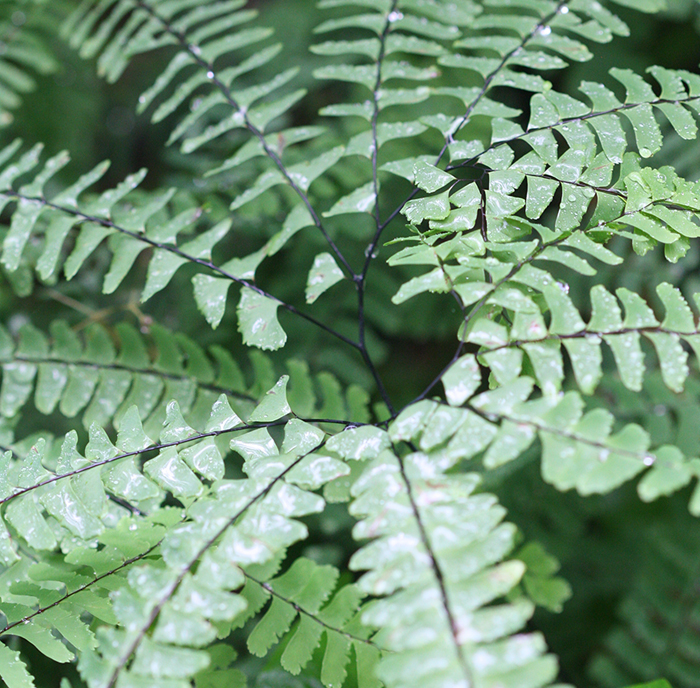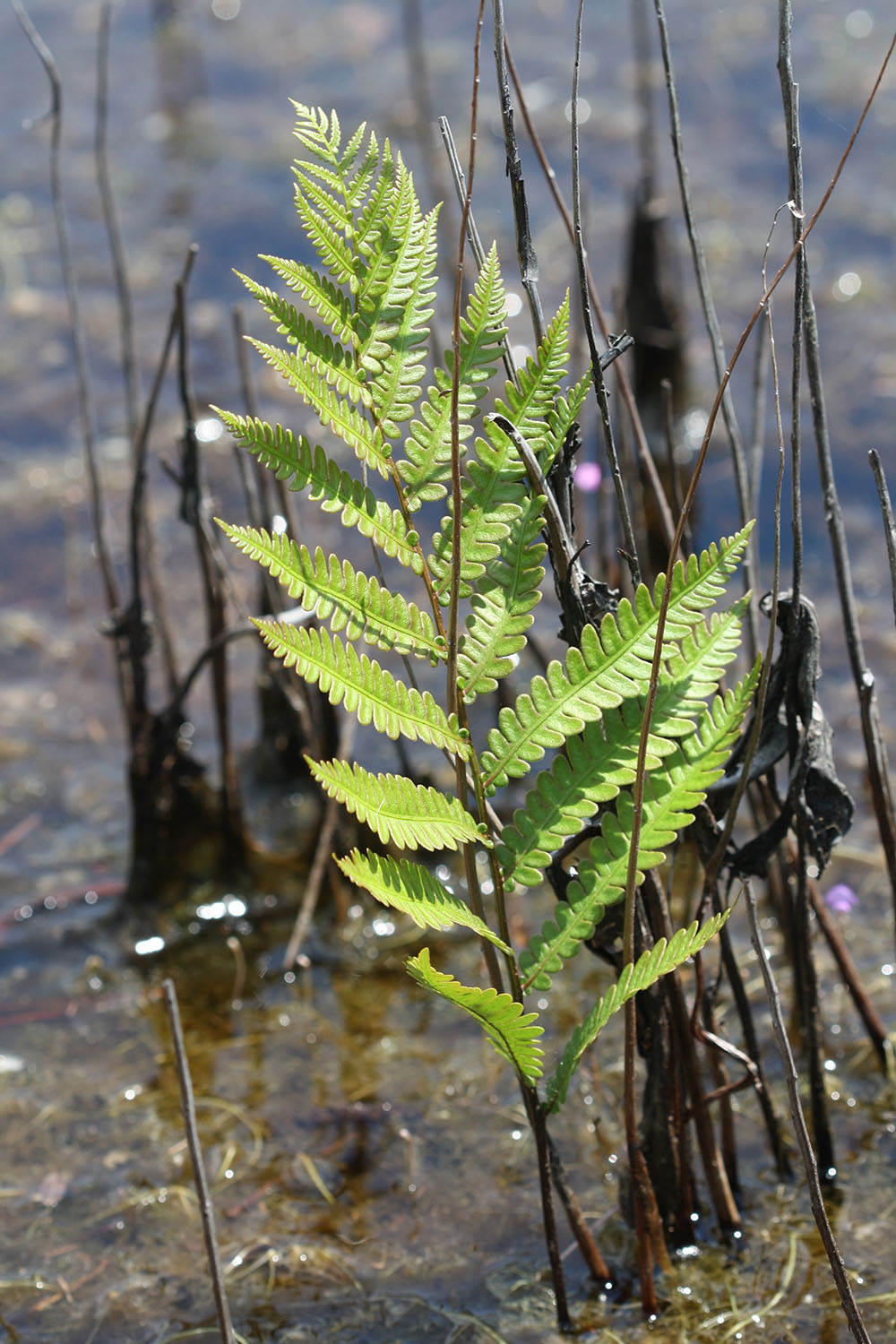
Frond of Anchistea virginica (Photo: A. Krings, CC BY-NC-SA 3.0)

Anchistea virginica (Photo: A. Krings, CC BY-NC-SA 3.0). Note how the veinlets near the center of each pinnule come together to form slightly curved cells.
Anchistea virginica - Virginia chain fern (Blechnaceae).
Bogs, depressions, bottomlands, pocosins. Mt: Uncommon; Pd: Uncommon; CP: Common.
Note how the
veinlets near the center of each pinnule
come together to form slightly curved cells.
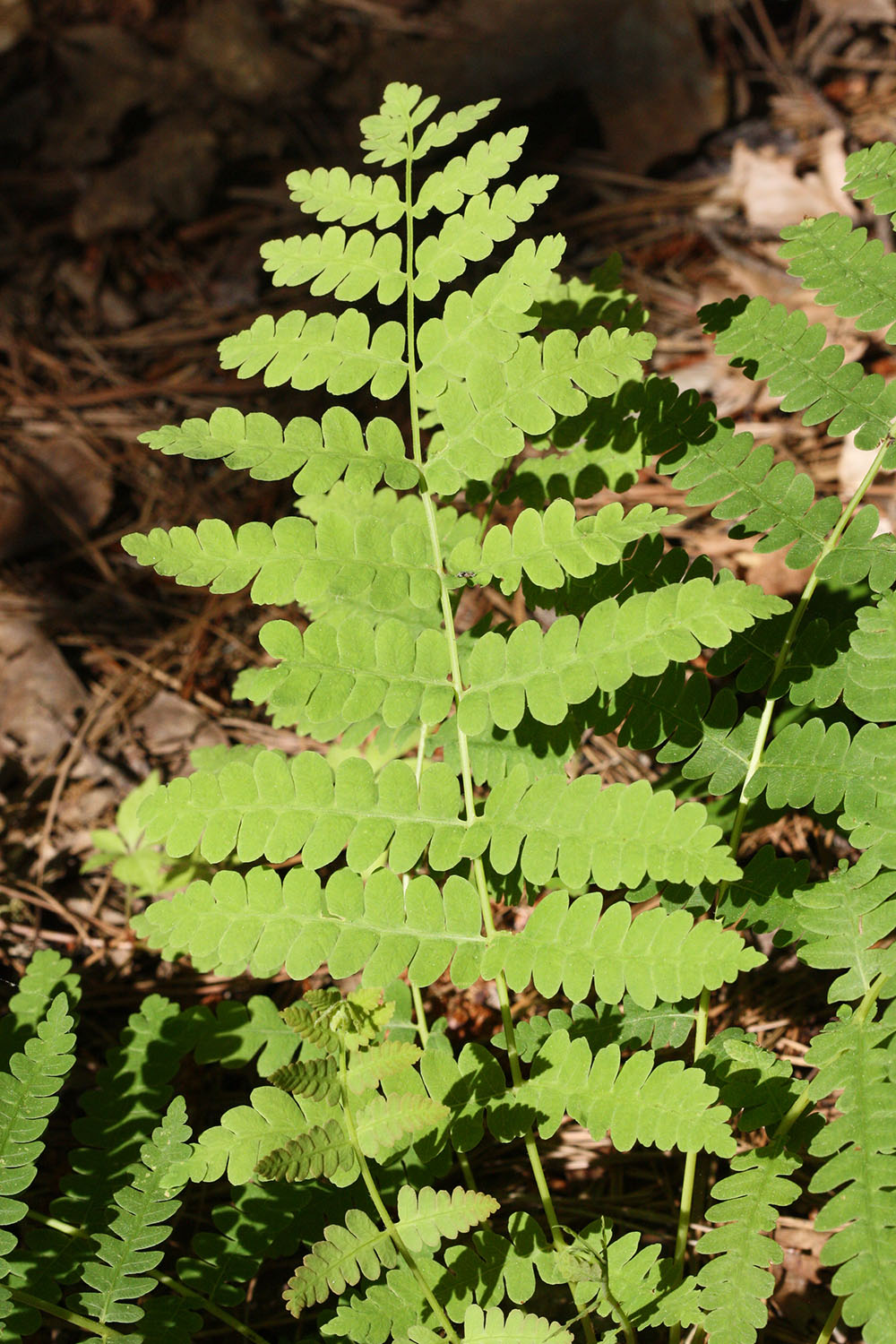
Frond of Osmunda claytoniana (Photo: A. Krings, CC BY-NC-SA 3.0)
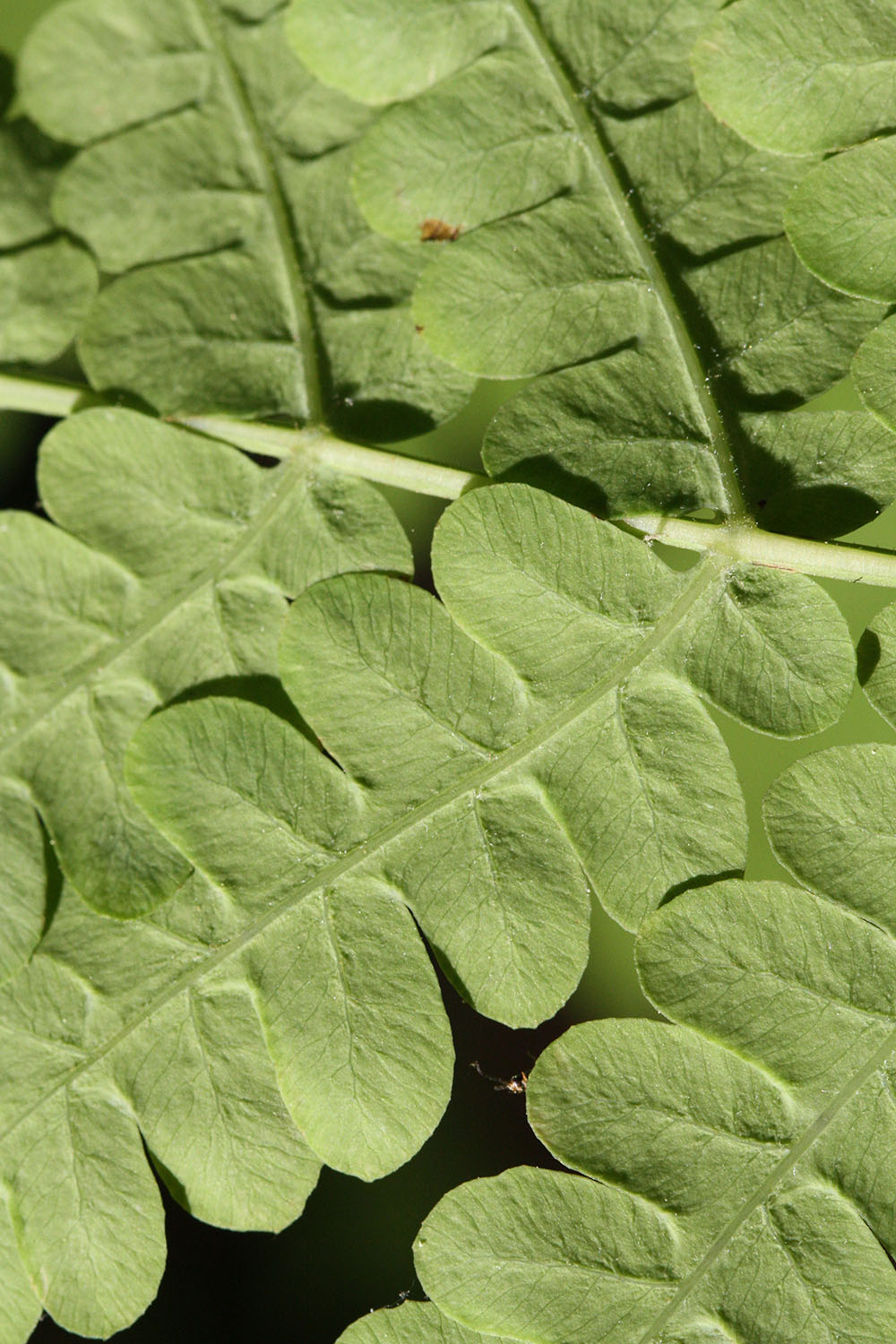
Osmunda claytoniana (Photo: A. Krings, CC BY-NC-SA 3.0). Note that the veinlets have a "wishbone" appearance, a character state shared with Osmundastrum cinnamomea and Thelypteris palustris. However, the pinnules are much narrower and not as broadly rounded in both of these species. In addition, the veinlets near the tip of the pinnules are often twice divided in O. claytoniana, whereas in T. palustris, they are divided only once or not at all.
Osmunda claytoniana - Interrupted fern (Osmundaceae).
Moist to dry forest, woodlands, and balds. Mt: Common; Pd: Rare; CP: Absent.
Note that the veinlets have a "wishbone" appearance, a character state shared with
Osmundastrum cinnamomea (see below) and
Thelypteris palustris (see below). However, the pinnules are much narrower and not as broadly rounded in both of these species. In addition, the veinlets near the tip of the pinnules are often twice divided in
O. claytoniana, whereas in
T. palustris, they are divided only once or not at all.
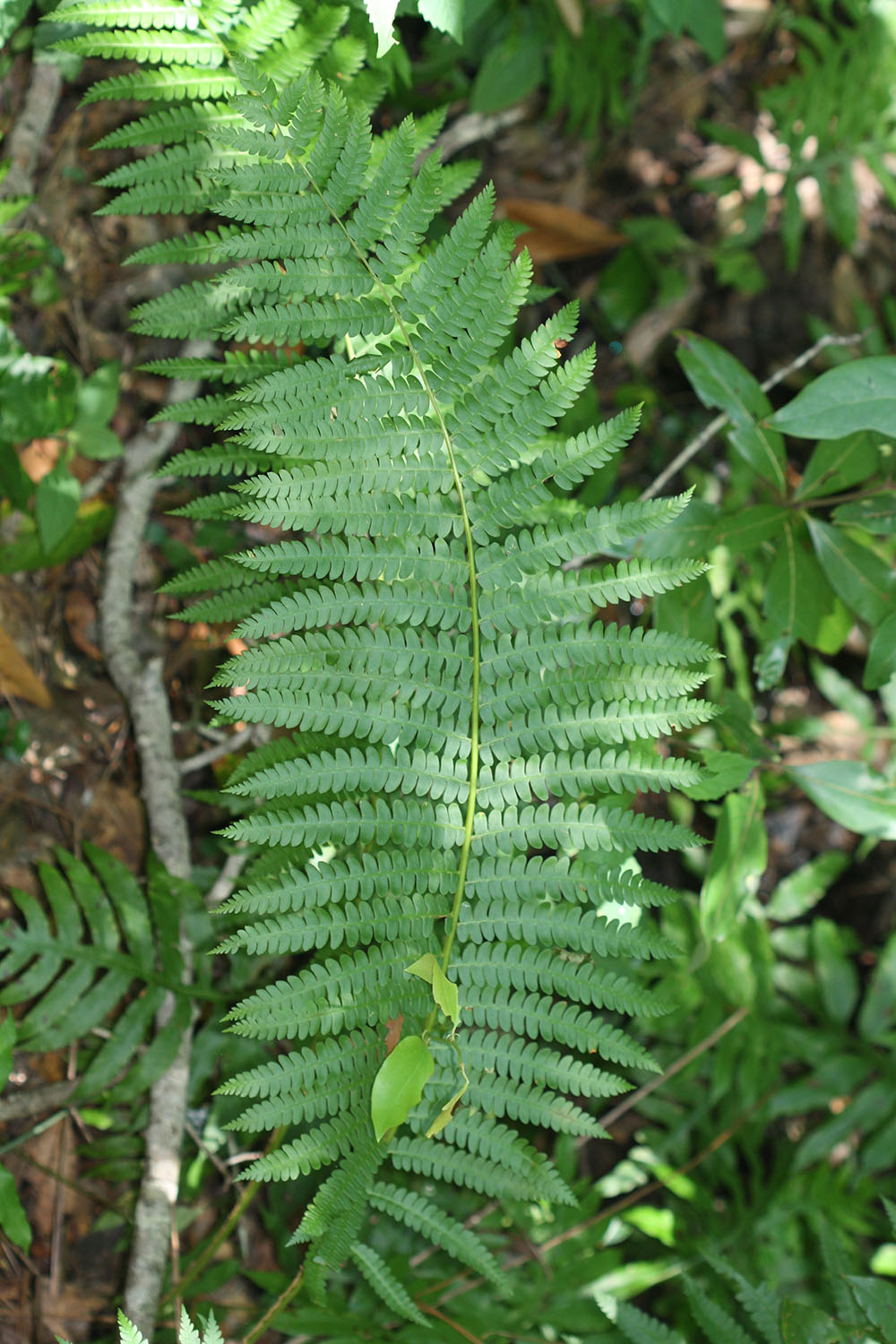
Frond of Osmundastrum cinnamomea (Photo: A. Krings, CC BY-NC-SA 3.0)

Osmundastrum cinnamomea (Photo: A. Krings, CC BY-NC-SA 3.0). Note that the veinlets have a "wishbone" appearance, branching once before reaching the margin. This character state is shared with Osmunda claytoniana and Thelypteris palustris. However, note the presence of curly hairs in O. cinnamomea.
Osmundastrum cinnamomea - Cinnamon fern (Osmundaceae).
Bottomlands, bogs, pocosins, wetlands. Mt: Common; Pd: Common; CP: Common.
Note that the veinlets have a "wishbone" appearance, branching once before reaching the margin. This character state is shared with
Osmunda claytoniana and
Thelypteris palustris. However, note the presence of curly hairs in
O. cinnamomea.
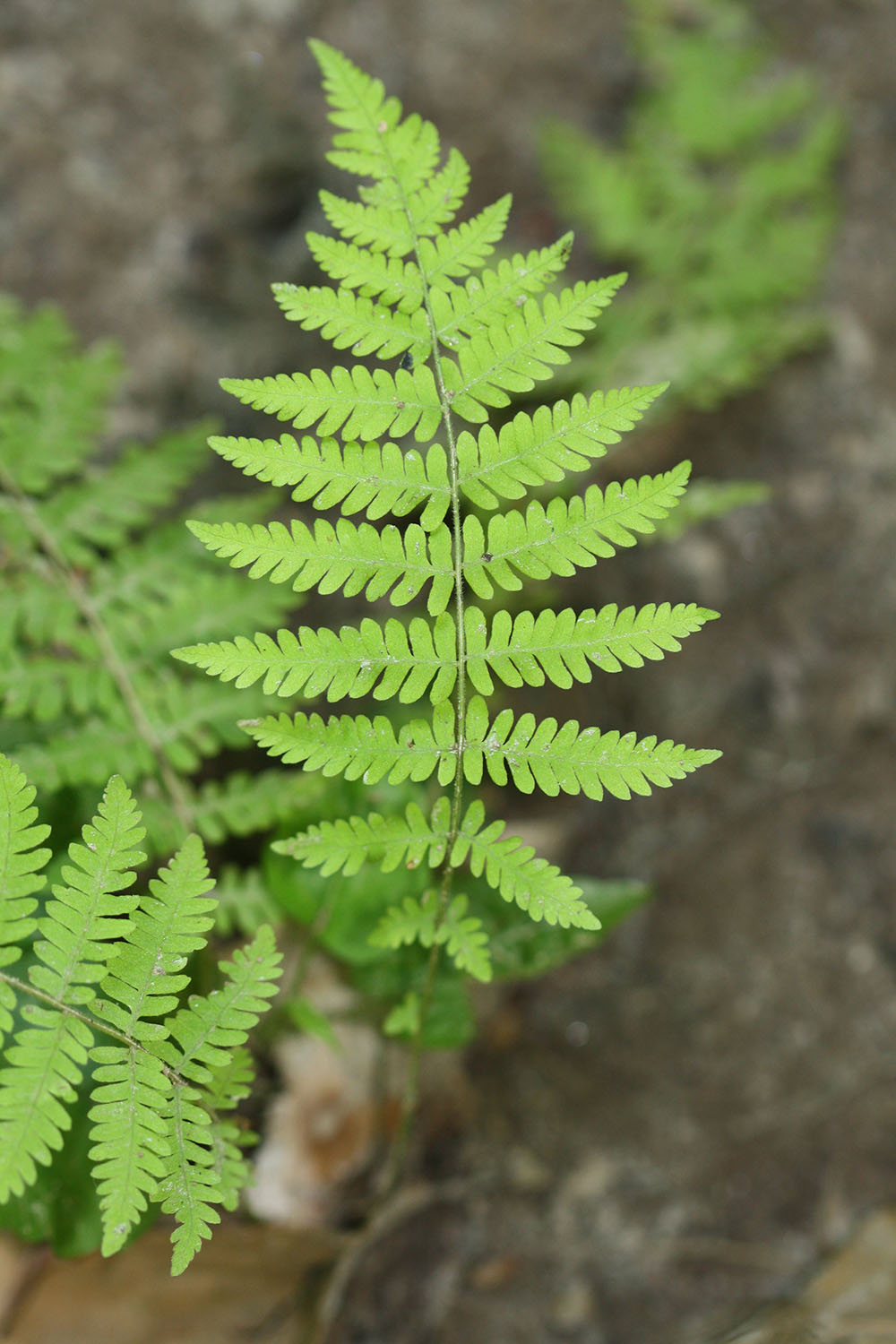
Frond of Parathelypteris noveboracensis (Photo: A. Krings, CC BY-NC-SA 3.0). Note the elliptic shape of the frond, with more or less even taper from the middle to the tip and base.

Sori and pinnae of Parathelypteris noveboracensis (Photo: A. Krings, CC BY-NC-SA 3.0). Note the relatively long pinnule marginal hairs, as well as that the veinlets rarely, if at all, branch before reaching the margin.
Parathelypteris noveboracensis - New York fern (Thelypteridaceae).
Bottomlands, moist forests, bogs. Mt: Common; Pd: Common; CP: Uncommon.
Note the
elliptic shape of the frond,
with a more or less even taper from the middle to the tip and base. In addition, note the relatively long pinnule marginal hairs, as well as that the veinlets rarely, if at all, branch before reaching the margin.
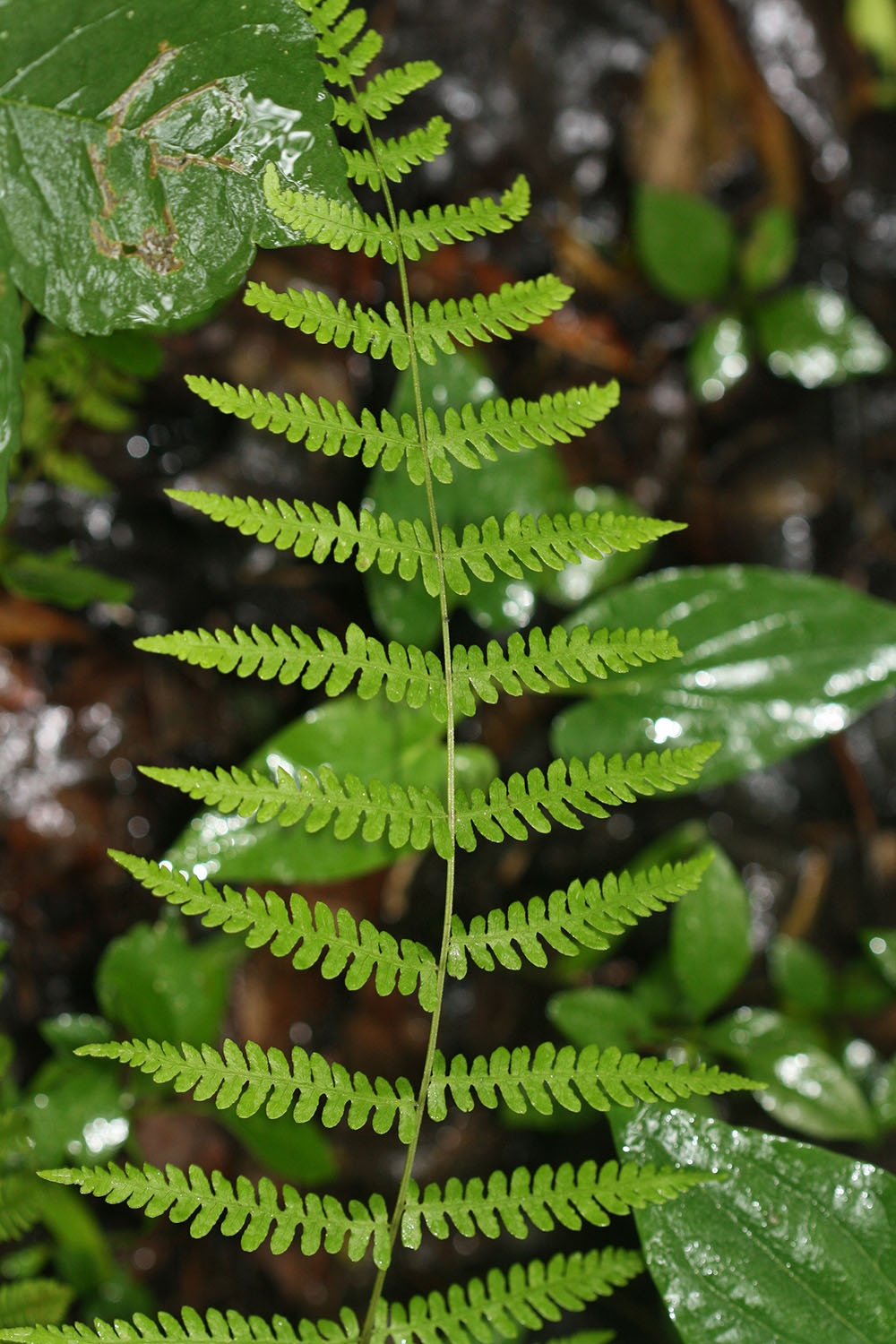
Frond of Thelypteris palustris (Photo: A. Krings, CC BY-NC-SA 3.0)
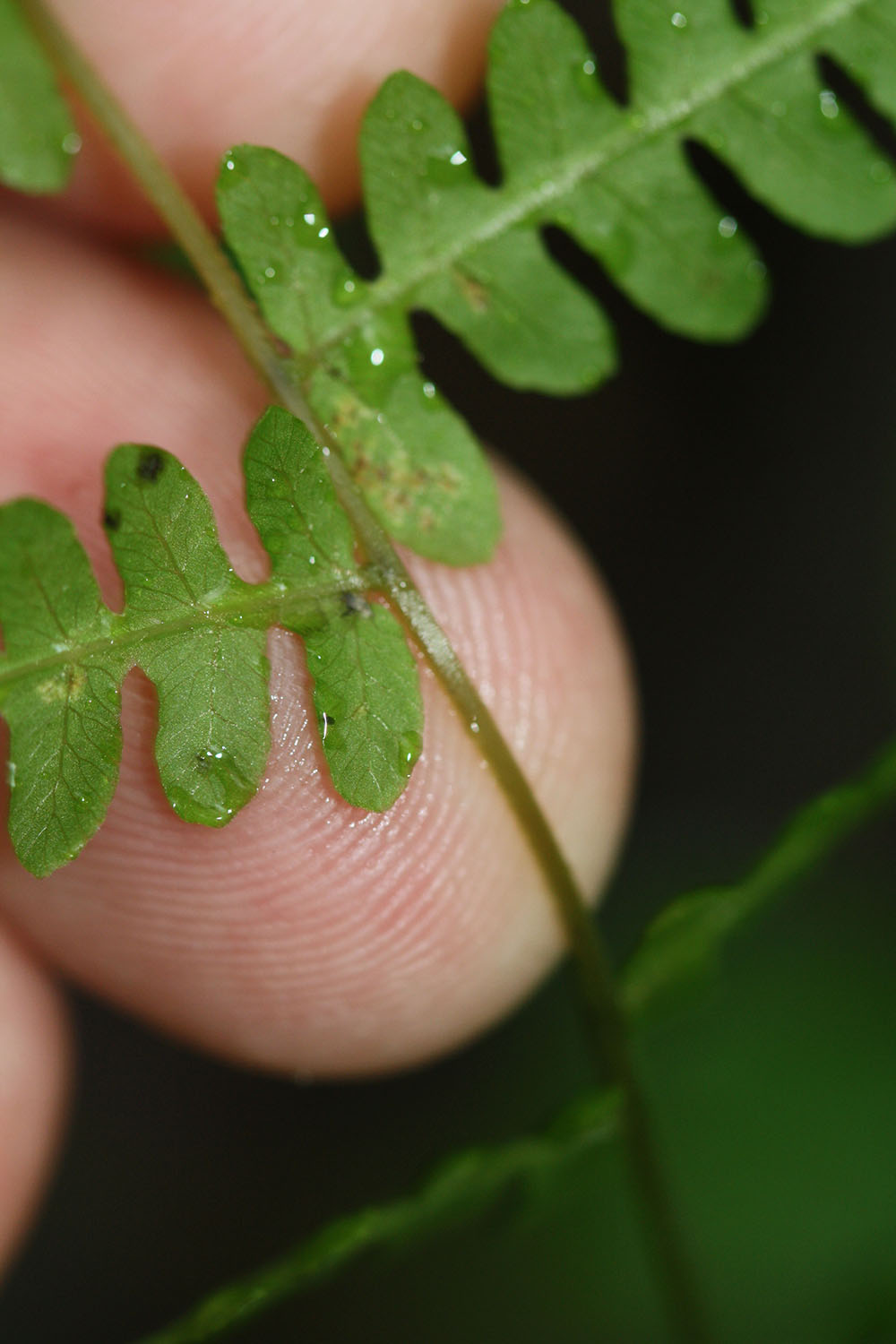
Thelypteris palustris (Photo: A. Krings, CC BY-NC-SA 3.0). Note that the veinlets have a "wishbone" appearance, branching once before reaching the pinnule margin. This character state is shared with Osmunda claytoniana and Osmundastrum cinnamomea (see above). However, Osmunda claytoniana exhibits distinctly broader and more rounded pinnules and the veinlets often branch more than once near the tip of the pinnule (in T. palustris, the veinlets near the pinnule tip branch only once or not at all). Osmundastrum cinnamomea exhibits curly hairs on the pinnae.
Thelypteris palustris - Marsh fern (Thelypteridaceae).
Bogs, marshes, bottomland forests. Mt: Uncommon; Pd: Common; CP: Common.
Note that the veinlets have a "wishbone" appearance, branching once before reaching the pinnule margin. This character state is shared with
Osmunda claytoniana and
Osmundastrum cinnamomea (see above). However,
Osmunda claytoniana exhibits distinctly broader and more rounded pinnules and the veinlets often branch more than once near the tip of the pinnule (in
T. palustris, the veinlets near the pinnule tip branch only once or not at all).
Osmundastrum cinnamomea exhibits curly hairs on the pinnae.



![Pinnatifid frond of Lorinseria areolata; note the presence of leaf tissue on both sides of the rachis [central axis of the frond] and that the pinnae are not further divided](images/pinnatifid.jpg)
![Bipinnatfid frond of Phegopteris hexagonoptera; note the presence of leaf tissue on both sides of the rachis [central axis of the frond] and the costae [central axis of each pinna]](images/bipinnatifid.jpg)
